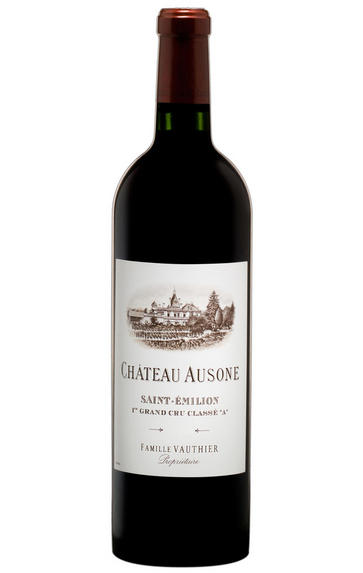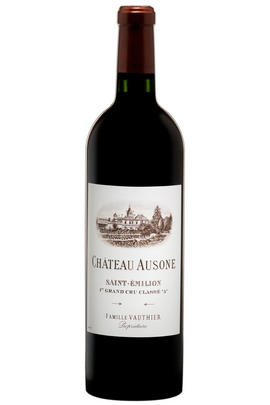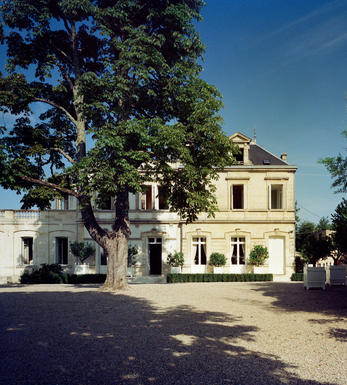
2019 Château Ausone, St Emilion, Bordeaux

Critics reviews
Lisa Perrotti-Brown MW , The Wine Independent (May 2022)
About this WINE

Château Ausone
Château Ausone is a wine estate in St Emilion on the Right Bank of Bordeaux. It takes its name from the poet Ausonius, who is thought to have owned a villa where the estate stands today – just outside the medieval village of St Emilion. Ausone’s vineyards sit atop St Emilion’s limestone plateau and extend in terraces down the côtes. There are just over six hectares of vines planted today, mostly Cabernet Franc along with Merlot. The team practice organic and biodynamic viticulture though without certification.
The estate belongs to the Vauthier family, led by Alain Vauthier and his children, Pauline and Edouard. In 1955, Ausone was ranked at the very top of the St Emilion classification – as Premier Grand Cru Classé A – alongside Château Cheval Blanc. In 2021, both Ausone and Cheval Blanc announced that they were voluntarily withdrawing from the classification.
Ausone is known for its structured, long-lived wines. A second wine, Chapelle d’Ausone, was introduced in the 1990s. The Vauthier family also own a number of other properties nearby in St Emilion, including Château Moulin Saint-Georges, Château La Clotte and Château de Fonbel.

St Émilion
St Émilion is one of Bordeaux's largest producing appellations, producing more wine than Listrac, Moulis, St Estèphe, Pauillac, St Julien and Margaux put together. St Emilion has been producing wine for longer than the Médoc but its lack of accessibility to Bordeaux's port and market-restricted exports to mainland Europe meant the region initially did not enjoy the commercial success that funded the great châteaux of the Left Bank.
St Émilion itself is the prettiest of Bordeaux's wine towns, perched on top of the steep limestone slopes upon which many of the region's finest vineyards are situated. However, more than half of the appellation's vineyards lie on the plain between the town and the Dordogne River on sandy, alluvial soils with a sprinkling of gravel.
Further diversity is added by a small, complex gravel bed to the north-east of the region on the border with Pomerol. Atypically for St Émilion, this allows Cabernet Franc and, to a lesser extent, Cabernet Sauvignon to prosper and defines the personality of the great wines such as Ch. Cheval Blanc.
In the early 1990s there was an explosion of experimentation and evolution, leading to the rise of the garagistes, producers of deeply-concentrated wines made in very small quantities and offered at high prices. The appellation is also surrounded by four satellite appellations, Montagne, Lussac, Puisseguin and St. Georges, which enjoy a family similarity but not the complexity of the best wines.
St Émilion was first officially classified in 1954, and is the most meritocratic classification system in Bordeaux, as it is regularly amended. The most recent revision of the classification was in 2012

Merlot/Cabernet Franc
Merlot and Cabernet Franc are grape varieties commonly used in Bordeaux-style blends, particularly in the Bordeaux region of France. When these two grapes are blended, they can create a wine that combines the best characteristics of each variety.
Merlot is known for its smoothness, soft tannins, and ripe fruit flavours. It often contributes black cherry, plum, and chocolate flavours to the blend. The grapes are relatively easy to grow and ripen earlier than other Bordeaux varieties, making them versatile for blending.
Cabernet Franc, on the other hand, adds structure, depth, and complexity to the blend. It typically brings aromas of red fruits such as raspberry and strawberry, along with herbal notes like bell pepper and tobacco. These grapes have thinner skins and can be more challenging to cultivate, requiring specific growing conditions to reach their full potential.
When Merlot and Cabernet Franc are combined, the result is a well-balanced wine with various flavours and aromas. The blend often exhibits a Bordeaux wine's medium to full body, along with a smooth texture and moderate tannins. The specific flavour profile can vary depending on the proportions of each grape in the blend and the terroir and winemaking techniques employed.


Buying options
Add to wishlist
Description
The 2019 Ausone is a blend of 65% Cabernet Franc and 35% Merlot. Deep garnet-purple colored, it bursts with uber-fragrant notes of liquid violets, licorice, exotic spices, and roses with a core of black cherries, plum preserves, black soil, and sassafras. Full-bodied, it is super concentrated with a razor backbone of refreshing acidity and very pixilated tannins, finishing with incredible depth and minerality. This wine dances!
Lisa Perrotti-Brown MW , The Wine Independent (May 2022)
wine at a glance
Delivery and quality guarantee